Choose Headless SEO to Maximize Website Traffic & Performance!

What’s Inside
- How Does Headless SEO Benefit Your Business?
Important Read!
- Key Features to Look for in Headless CMS SEO
- SEO Best Practices for Headless Content Management System
- Get to experience the Best Headless CMS today!
- Conclusion: Ready to Go Headless For Maximum SEO Benefit?
Key Takeaways
- The separated frontend of headless CMS improves overall user experience, website speed, and search engine ranking for better SEO performance.
- Headless SEO helps to reach the right target audience across multiple channels.
- The ability to deliver personalized content increases engagement and gives positive results for SEO for headless CMS.
Did you know? A staggering 68% of online experiences begin with a search engine.
Organic search is proven to be more effective than paid ads, social media, and marketing campaigns.
Imagine pouring your heart and soul into creating compelling content but going unnoticed by your target audience! Therefore, content management with effective search engine optimization is unavoidable in reaching the right audience.
That is where headless SEO comes into play.
Headless CMS acts as a bridge between your target audience and content by providing a flexible infrastructure.
After deep understanding of what is headless CMS, let us guide you with how headless CMS and SEO complement each other to elevate businesses' digital presence and drive desired results.
Moreover, we will uncover the features to look for in headless CMS to drive SEO success and best SEO practices for content. Without further ado, let's get started!
How Does Headless SEO Benefit Your Business?
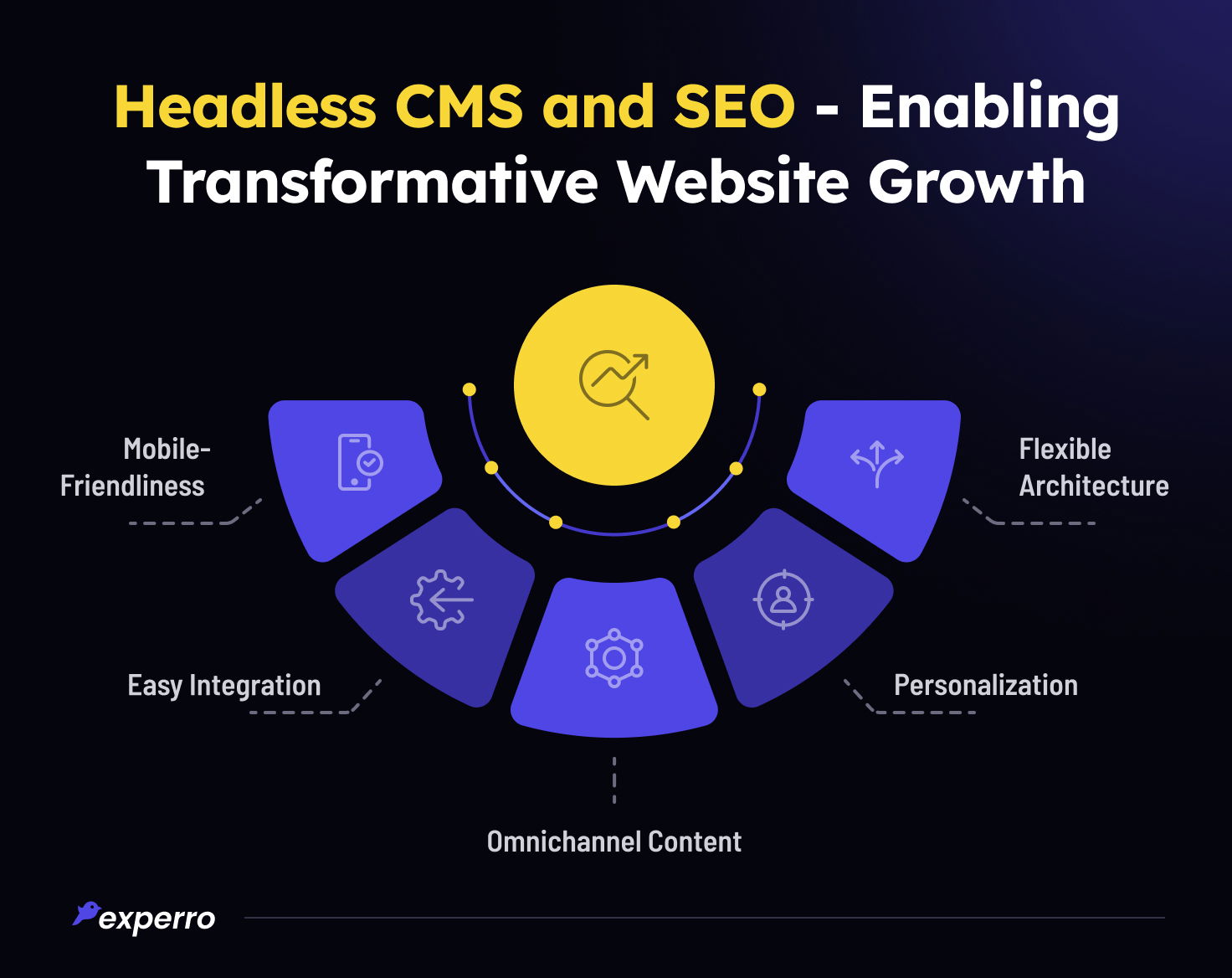
Traditional CMS platforms had enjoyed widespread popularity before the drastic rise of the digital industry. However, content consumption was limited to only websites back then.
Fast forward to today, it’s the era of digital content strategy - from mobile devices, websites, social media platforms, voice search, IoT devices, smartwatches, and more. The legacy CMS often poses limitations to delivering content seamlessly on all these digital channels.
On the other hand, a headless content management system acts as a solution. Platforms for headless SEO fit perfectly in the modern digital landscape, improving SEO strategies and seamlessly delivering content on multiple digital channels. This is exactly where traditional CMS vs headless CMS makes a difference.
From the points mentioned below, let's understand how headless CMS helps SEO and elevate your business.
1. Mobile-Friendly Approach
These days digital content is largely consumed through mobile devices as compared to desktops. With API-based content delivery of headless CMS, content can be easily optimized for mobile phones.
While crawling, the search engine prioritizes a mobile-responsive site as it offers enhanced user experience. Hence, by optimizing your content for mobile phones you can significantly improve SEO rankings.
Headless SEO is enabled by a CMS ensures consistent user experiences by providing flexible layout designs for all devices (including mobile phones, desktops, and tablets).
Responsive designs are an important factor for SEO as they ensure that the website provides optimal user experience irrespective of screen size. Choose a good responsive website builder to launch a website with responsive design.
2. Easy Integration with Third-Party Tools
Headless CMS features allow easy integration with third-party tools to improve your website's SEO. With the best-in-class headless CMS, you can integrate your business website with your favorite SEO apps, analytics tools, and tracking tools to improve SEO efforts.
Integrating with headless SEO tools allows businesses to access keyword research tools, key meta tags management, and performance tracking. Moreover, easy integration with third-party tools future-proofs businesses as they can adapt to the changing digital landscape.
3. Omnichannel Content Delivery
Did you know? Companies with omnichannel customer engagement see an 9.5% increase in revenue each year.
Headless CMS's API-driven approach (Application Programming Interface) enables delivering content on multiple digital channels such as websites, social media, and mobile apps.
Leveraging omnichannel content distribution using headless CMS helps to drive traffic and connect with an extensive customer base. Eventually, it brings positive results for your SEO strategies.
4. Content Personalization
When it comes to headless SEO, it takes more than keywords to secure a top position on search engine result pages. 80% of people are likely to buy from a company that offers personalization. And this statement holds more importance if you run an eCommerce business especially.
The decoupled architecture of headless CMS enables the delivery of highly personalized content across various digital channels. Personalized content delivery leads to more engagement and, hence, better SEO results.
5. Flexible Architecture of Headless CMS
Headless content management systems have a flexible architecture. Separation of the frontend from its backend enables effortless editing for developers.
Moreover, headless CMS allows organizations to create fresh content and deploy it quickly over multiple digital channels. This results in enhanced SEO performance and empowers businesses to generate organic traffic. This speed is only possible through the SEO-friendly CMS.
Important Read!
Key Features to Look for in Headless CMS SEO
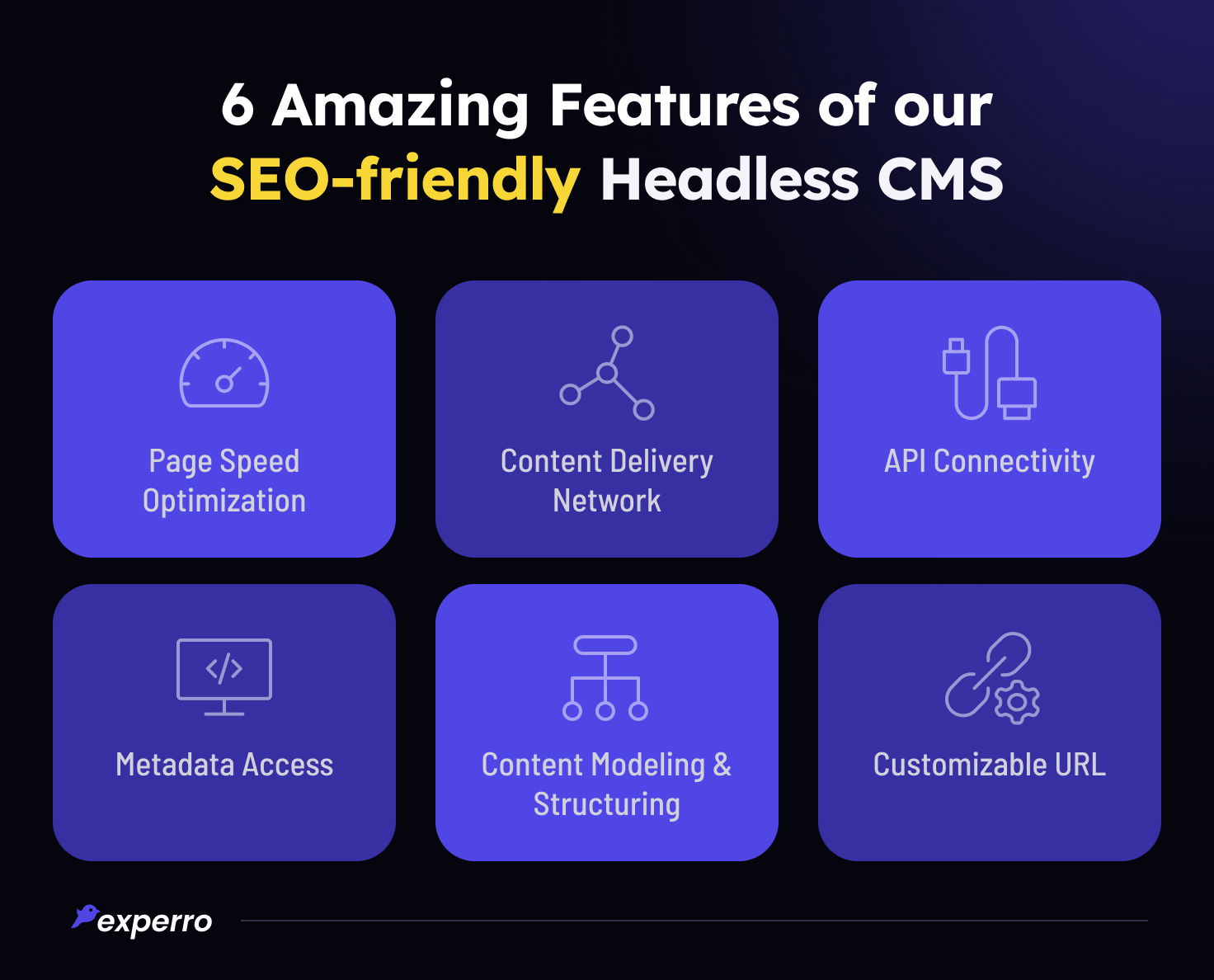
If you want to enhance your SEO practices with headless CMS, there are some key features of headless CMS to take into consideration.
1. Page Speed Optimization
A total of 77% of mobile shoppers like to purchase from faster websites.
Optimizing a website's page loading time can be an essential feature to look for. For example, if you are running an eCommerce website, your website might face downtime during high traffic. Slow page loading hampers users' shopping experience and results in a bounce rate.
Headless CMS architecture is highly scalable and enables fast-speed page loading, even during high traffic.
2. CDN (Content Delivery Network)
CDN quickly delivers content through the closest server upon user’s request. This increases websites' reliability and ensures the content reaches different regions rapidly. It gives a smoother browsing experience to customers and results in better SEO performance.
Moreover, with CDN, websites can handle large amounts of traffic and sudden surges in user demand without affecting downtime.
3. API Connectivity
The API-driven content delivery enables flexible and seamless delivery of content on various digital platforms. APIs implement faster data transfer seamlessly over the internet.
The seamless user interaction increases the brand's reach and results in better SEO performance.
4. Metadata Access
Metadata access plays a crucial role in CMS SEO requirements. Search engine crawlers use metadata to understand users' search queries and provide them with relevant content.
Leverage the metadata by using headless SEO enabled CMS.
5. Content Modeling and Structuring
Content modeling and structuring in headless CMS is the process of defining and structuring content elements within the website. It ensures the content is presented in a structured and hierarchical manner to the user.
Moreover, by organizing content into meaningful categories, taxonomies, or tags, a headless CMS facilitates the creation of logically grouped and targeted content. This provides the necessary framework for SEO.
6. Customizable URL
A headless CMS with customizable SEO-friendly URL features allows users to customize the URLs of their web pages to include keywords and other relevant information.
This can improve SEO by making URLs more descriptive and user-friendly while making it easier for search engines to understand the page's content.
After considering all the above factors, choosing the best headless CMS for SEO is important.
SEO Best Practices for Headless Content Management System
The search engine doesn't make your content rank just like that. So, here's the list of SEO best practices for content that can certainly drive more traffic to your website.
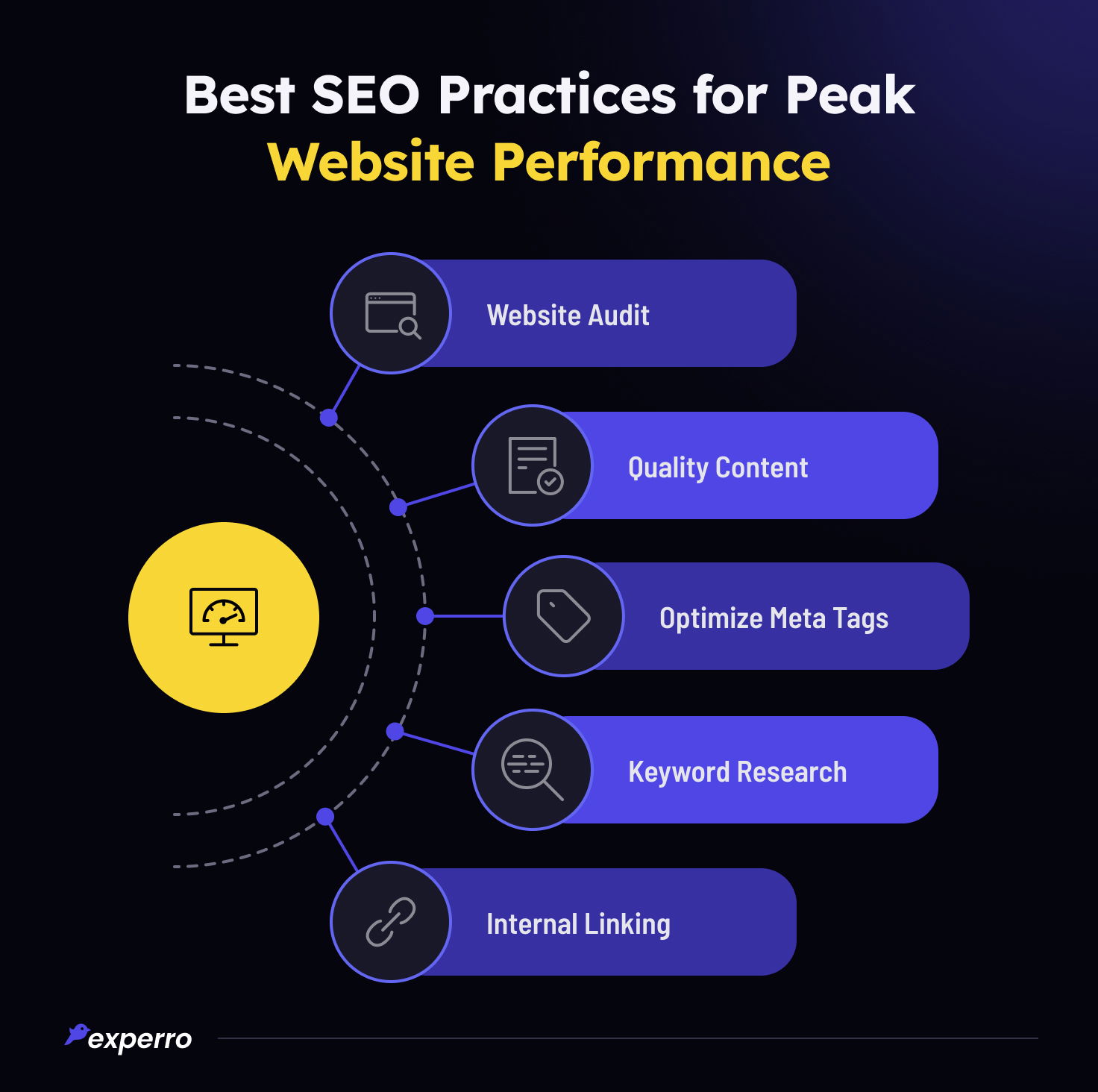
1. Perform Website Audit
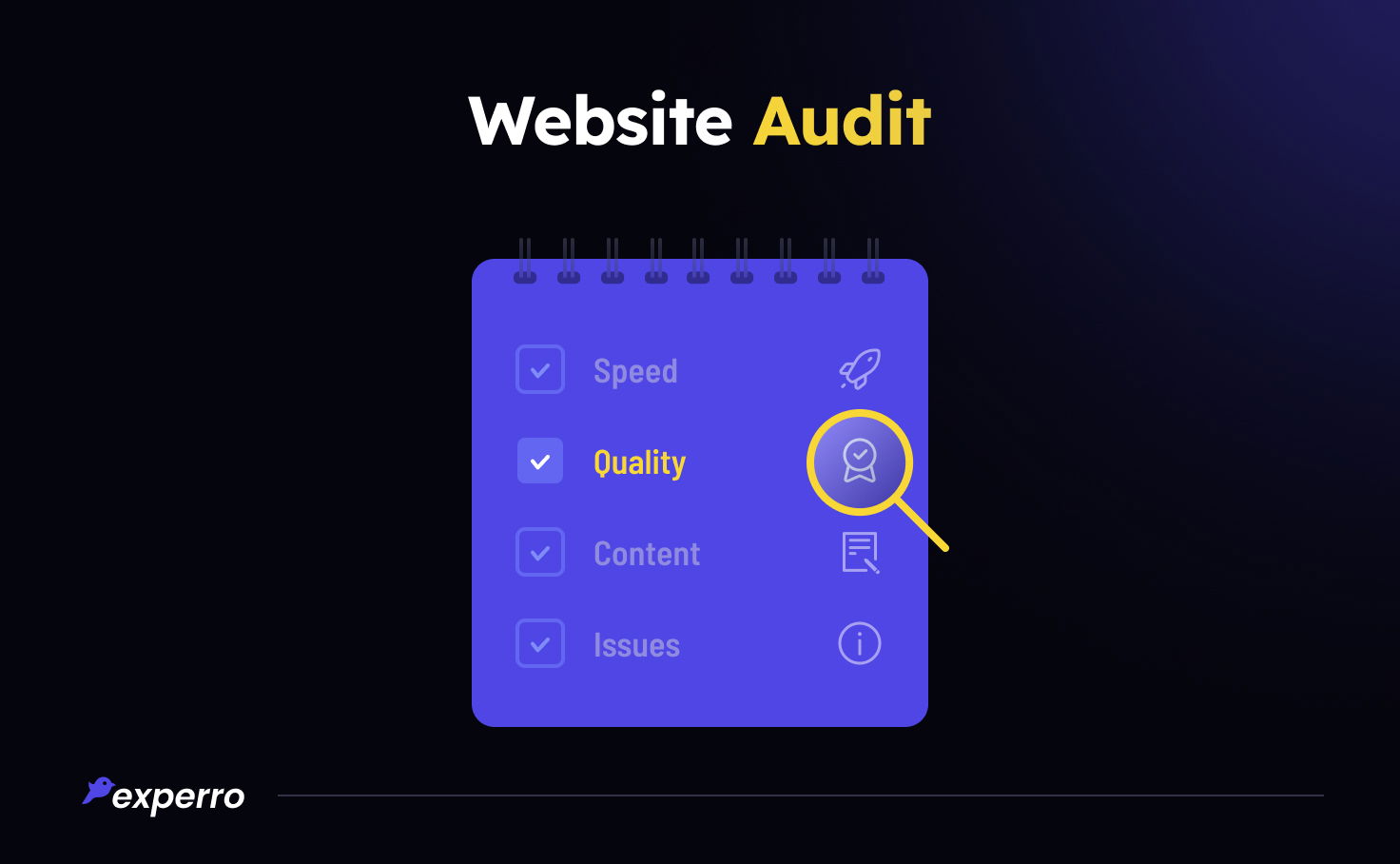
Your website might have areas that need a change in content, user experience, or page speed. Performing audits involves identifying those areas that can affect SEO performance and making necessary changes for better reach.
2. High-Quality Content
The biggest difference between headless CMS and traditional CMS is the ability to deliver high-quality content.
The first and foremost priority for driving engagement must be content quality. A search engine considers engagement metrics like average time spent on the page, bounce rate, and click-through rates.
Producing valuable and relevant content keeps your audience engaged and reduces the bounce rate. Also, it increases the reliability and authenticity of the content for users.
3. Optimize Meta Tags
Meta titles are the first interaction of users with your content, which holds the potential to drive traffic.
Meta descriptions are the summary of your content shown by a search engine. A well-written meta description increases click-through rates and engagement.
4. Keyword Research
Keyword research enables you to connect with your target audience by utilizing the correct words. This strategic approach of targeting relevant keywords ensures that your content is valuable and optimized for search engines.
Moreover, it increases the likelihood of attracting organic traffic and fulfilling user needs. To optimize keyword research, businesses can use Google search console or keyword planning tools.
5. Internal Linking Practice
Adding internal links to your website ensures easy navigation between different pages for users. Moreover, internal links are a great way to engage your audience and reduce bounce rates.
Conclusion: Ready to Go Headless For Maximum SEO Benefit?
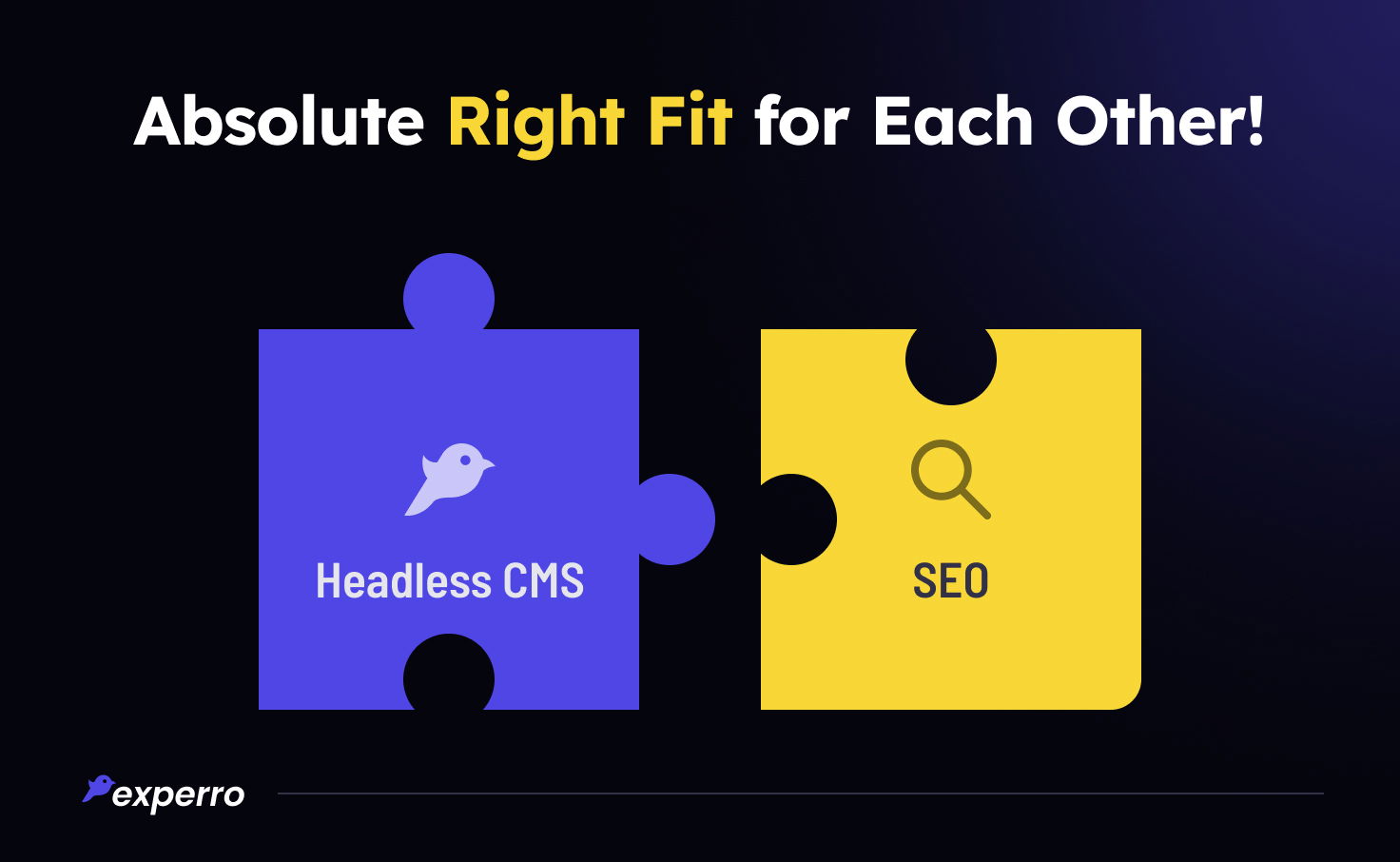
So, what is the best CMS for SEO? It's Experro's headless CMS!
The quality of your content is a prime factor affecting SEO. You can even increase your CTR (click-through rate) with the help of a perfect headless CMS for SEO.
The headless CMS platforms drive more website traffic by ensuring omnichannel content delivery, seamless user experience, and responsive designs. By boosting your SEO strategies with headless CMS, you can easily get discovered by your target audience on search engines and turn your traffic into conversion.
Overcome your SEO challenges with the best SEO-friendly headless CMS choice. Book a demo with Experro today!
FAQs


Priya Zala
26 June 2024Through her writing, she has a lovely way of capturing users' pain points and delivering solution-oriented content. Her writing is sure to captivate readers and leave them with a lasting impression. When not crafting content, Priya enjoys getting lost in a good work of fiction, which soothes her soul.